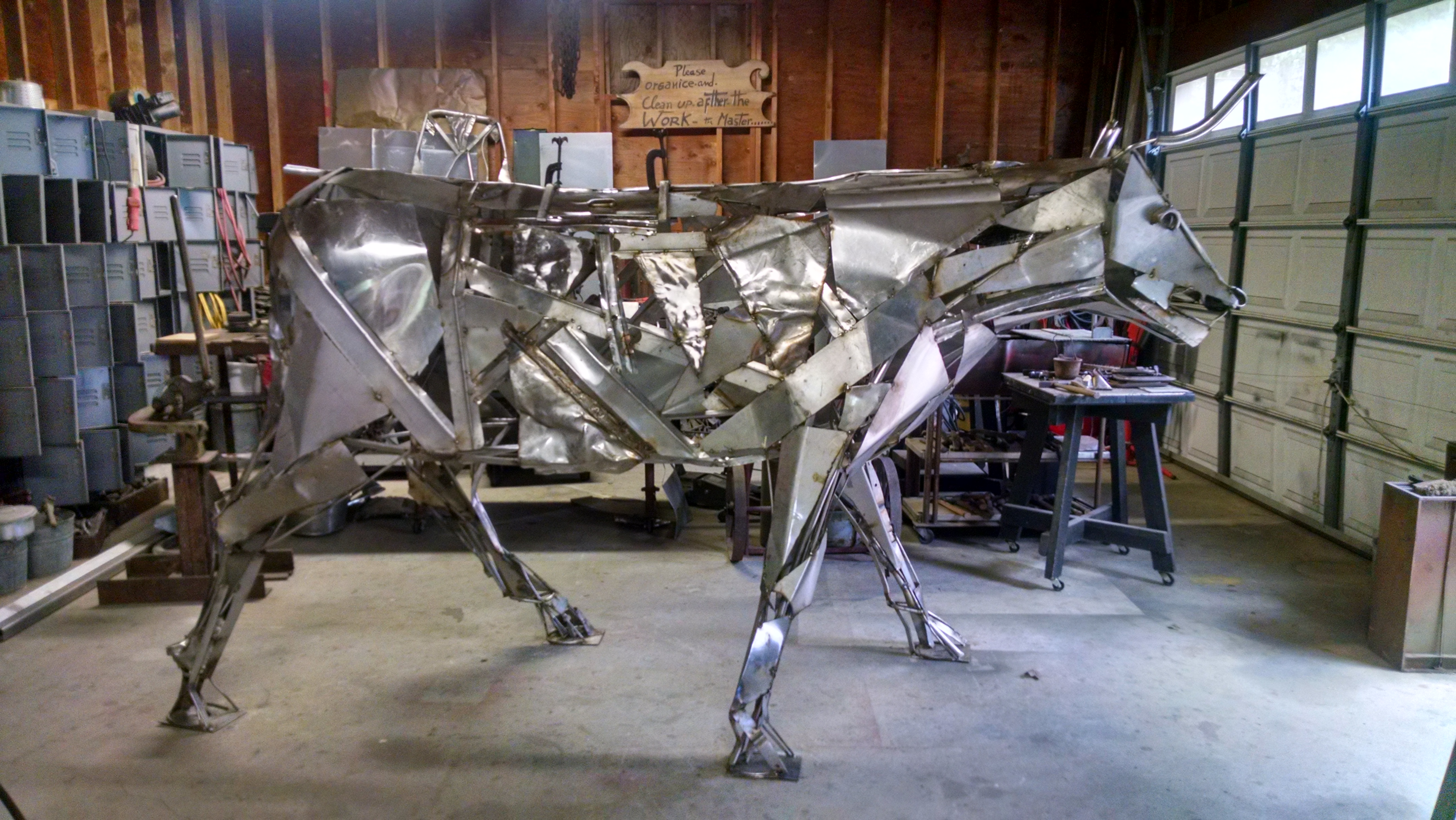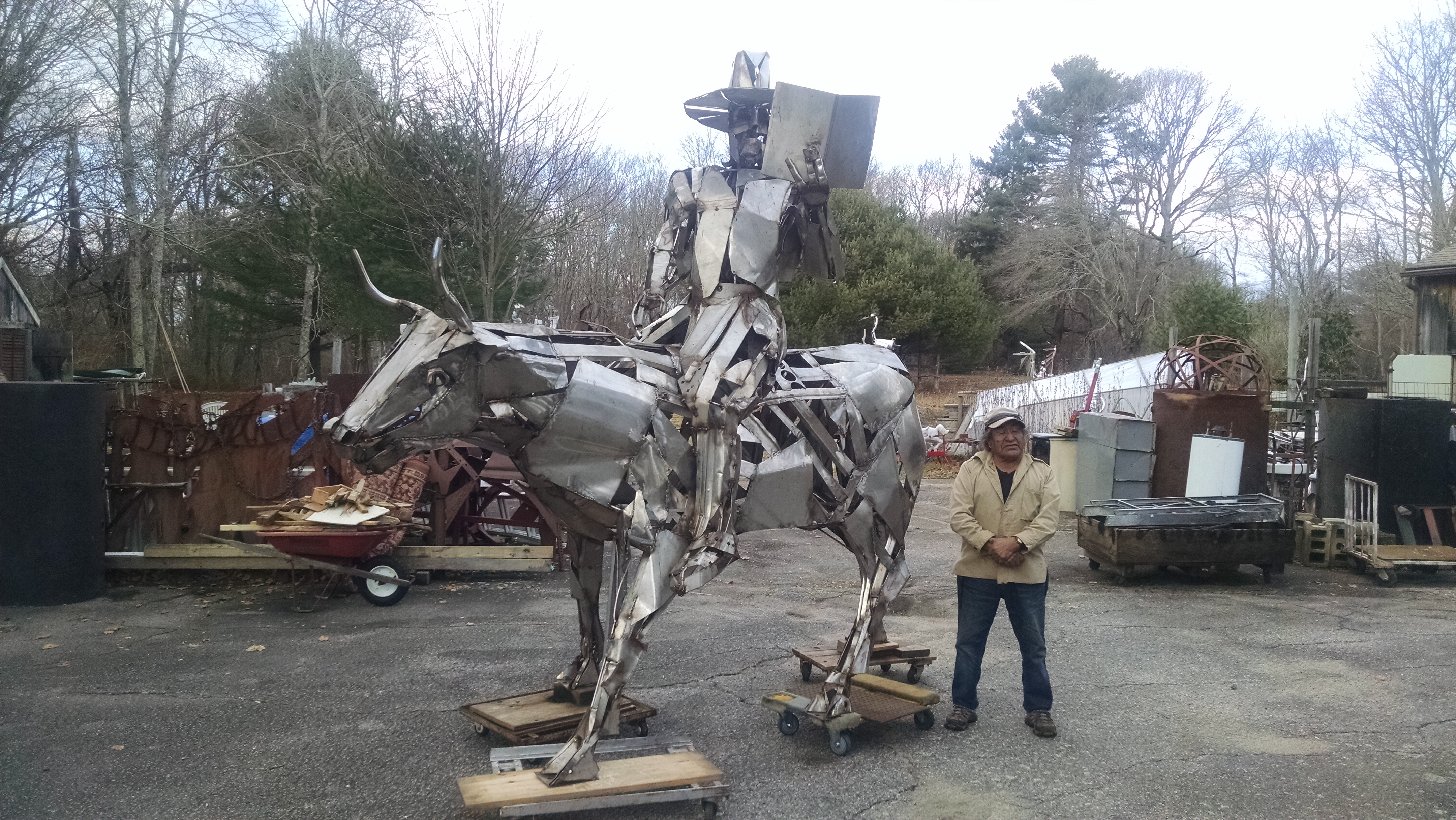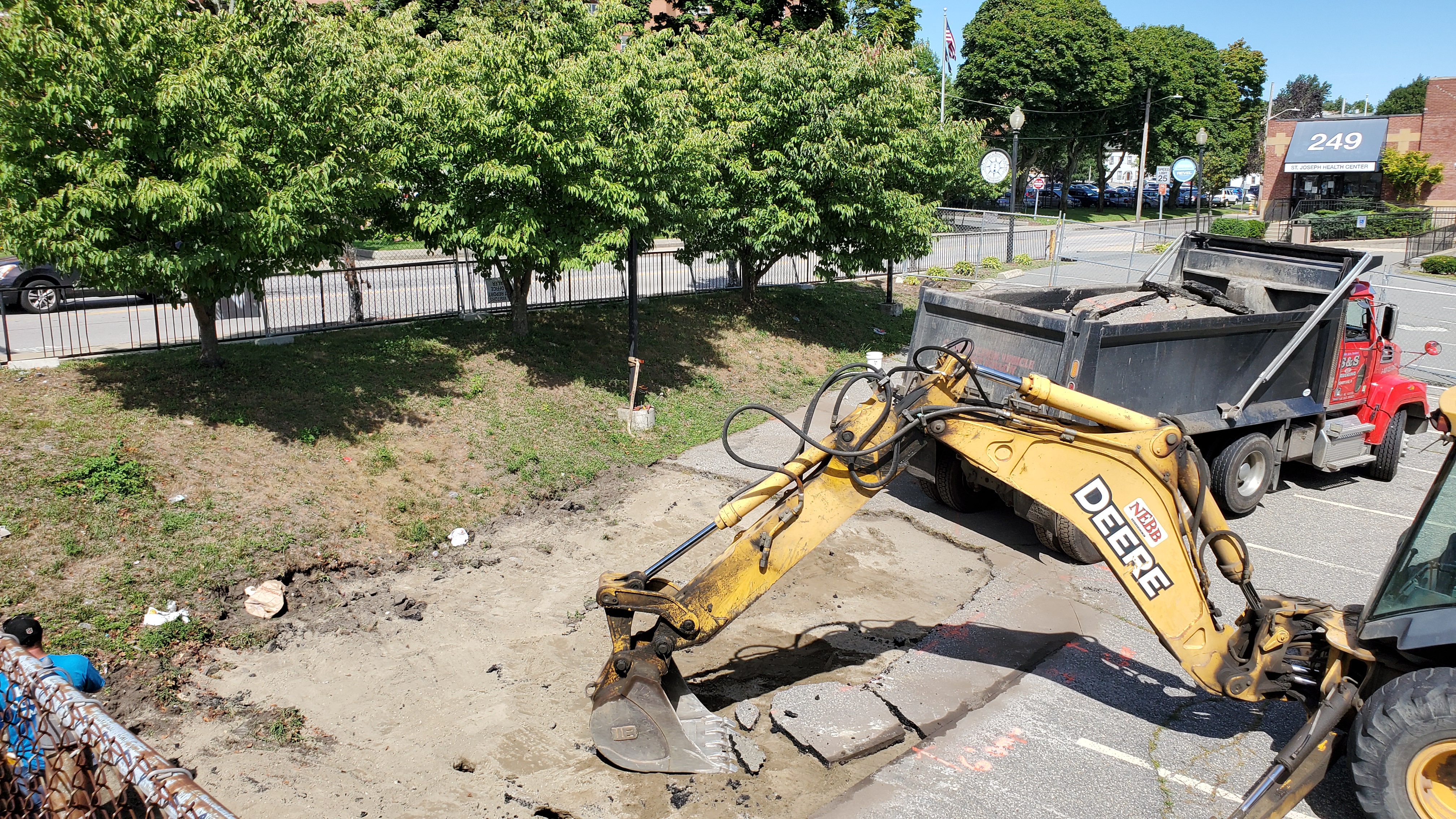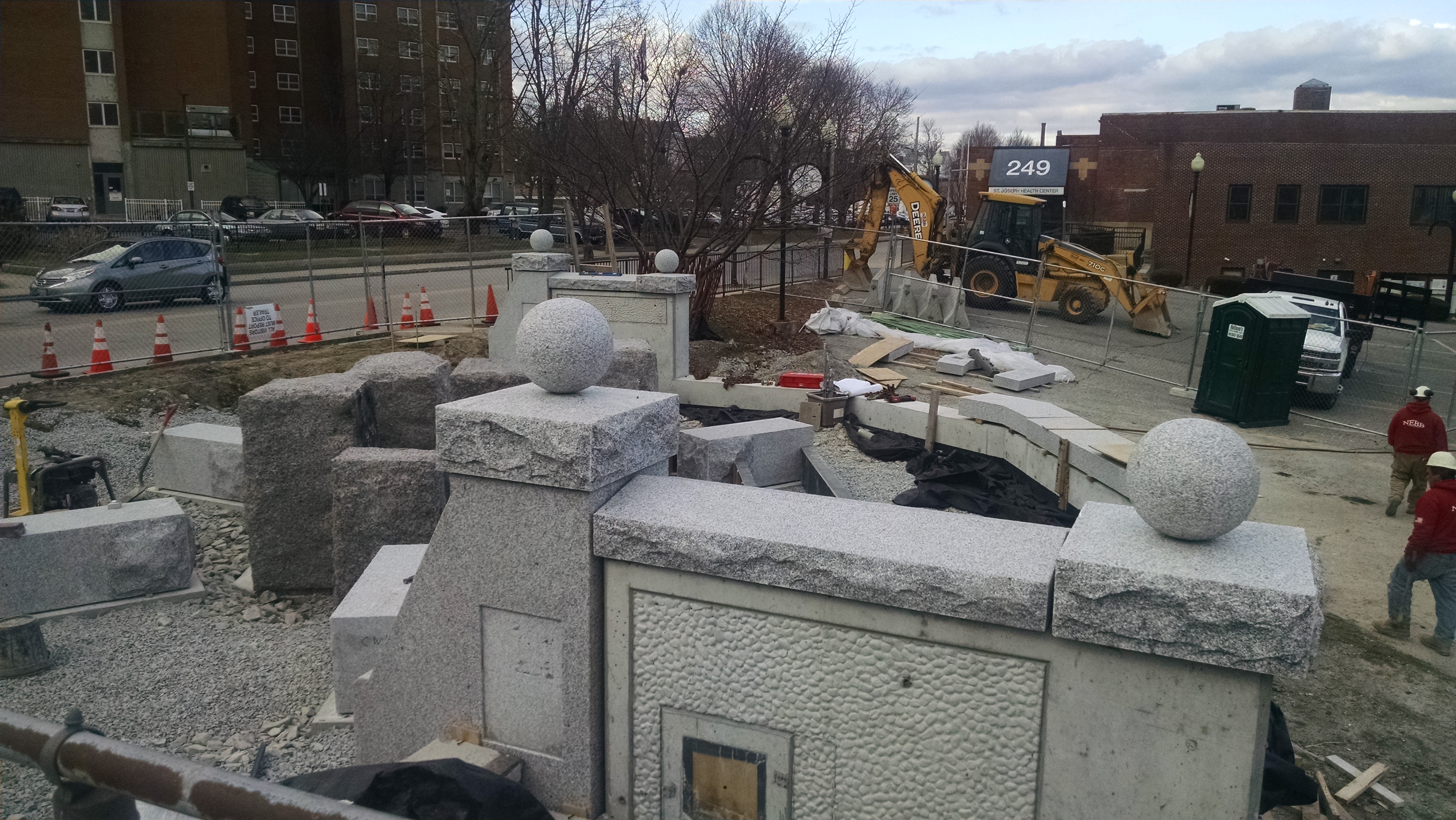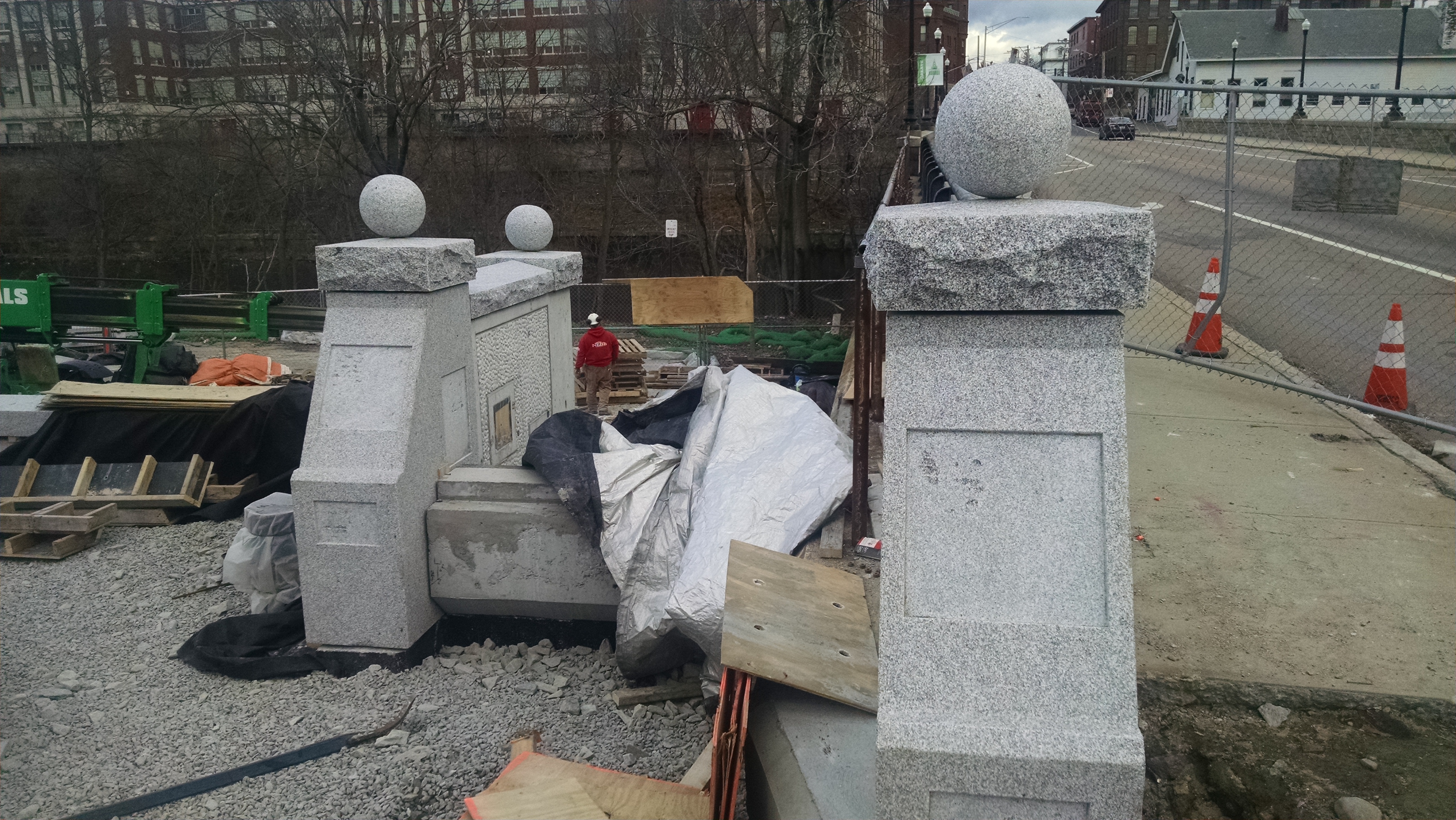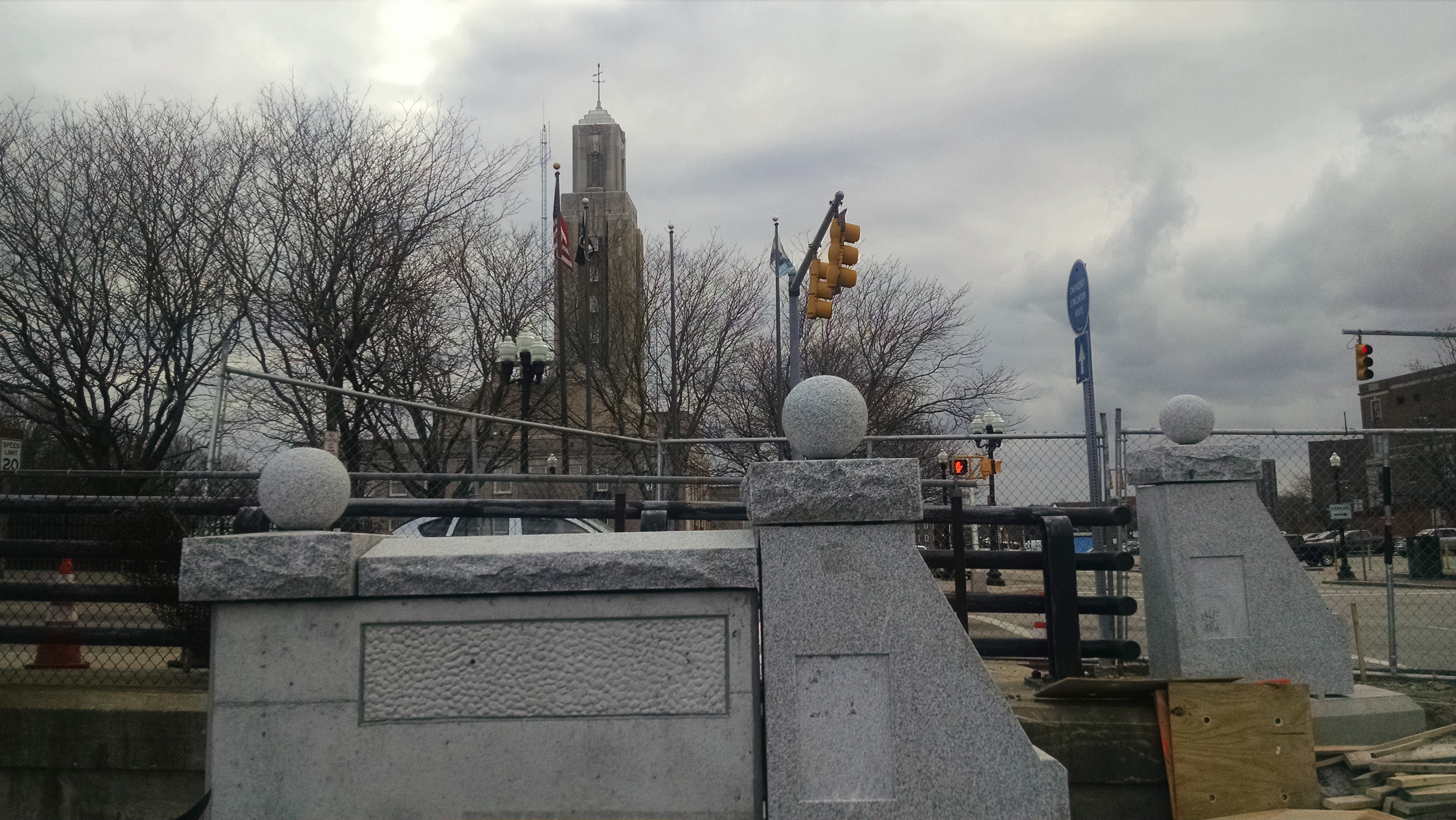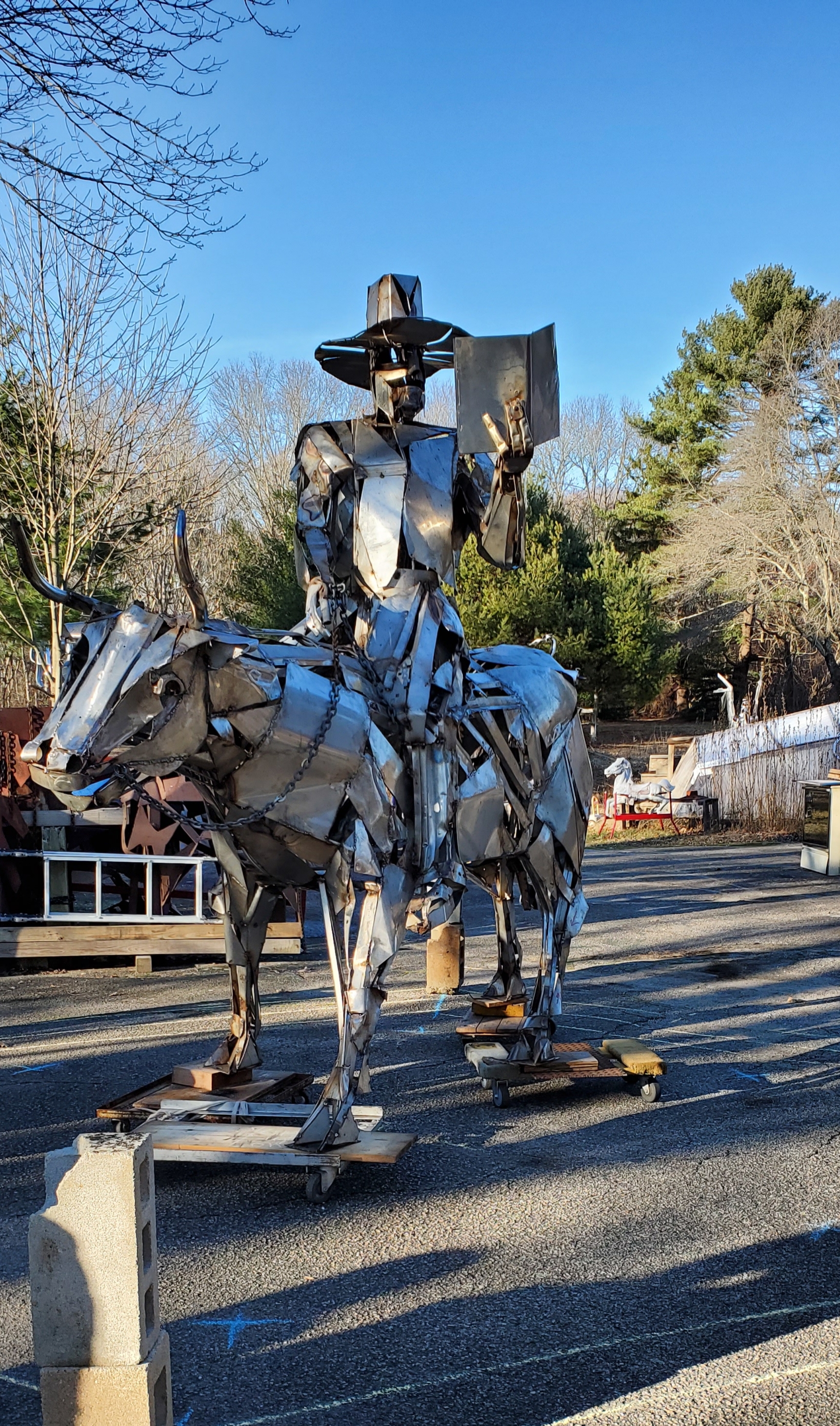William Blackstone Monument Discussion
Pawtucket, Rhode Island
Background
The concept of a monument for the first English settler to what we call Rhode Island today, began with a discussion between Louis Yip, Sunny Ng and designer Morris Nathanson over 5 years ago. The discussion involved a call for a monument of the Reverend William Blackstone. The Blackstone Valley Tourism Council was involved to assist the project. Dozens of organizations take the name Blackstone. In fact, our new national park is the Blackstone River Valley National Historical Park. Blackstone's name, while widely used throughout the river valley, is poorly understood in this modern day. That was the point of the conversation.
This casual discussion set into action a land purchase, and a commissioning of a 14' stainless steel statue of Blackstone created by Peruko Ccopacatty of Exeter RI. It was financed by Ng and Yip. Because the City of Pawtucket was adding to its Blackstone River Bikeway, the monument and the bikeway would both benefit by using a piece of land adjacent to the Blackstone River owned by Yip and Ng. This led to a design by BETA Engineering of Lincoln, RI and the resulting construction of granite landscape to graphically tell the story of Blackstone, supported by the city of Pawtucket. It was complete with locations on the granite to not only tell who Blackstone was, but also to his relationship with the first peoples that occupied the land and river that flowed through the city of Pawtucket to Narragansett Bay.
During the final phase of the project, Richard Kazarian was selected as the person who would be responsible for providing the historical narrative that would accompany the Blackstone statue. Not only was Kazarian raised in Pawtucket and holds a doctorate in American history from Brown University, but since his return home has advocated for a major reappraisal of the city’s long and unexplored history. Kazarian felt that the choice of Blackstone for a statue was far more problematic than the project organizers had anticipated. He questioned whether it was the right time and the right person to be celebrating -- a figure so closely associated with the forces that led to the near complete destruction of native life here. In Kazarian’s opinion, a brief reference to the fate of our indigenous ancestors at the base of a fourteen foot tall Blackstone statue, was totally inappropriate and had to be rethought.
At a January meeting with Mayor Grebien, Kazarian advised the city to pause the project and to take the time necessary for the community to reflect on the subject. We will ultimately have to decide if Blackstone represents the values that we want to be endorsing in our own age. Kazarian explained to the mayor, that these historical events may date back centuries, but our decision today, will last into the future and indicate how seriously we took our responsibility to deal truthfully with difficult subjects.
Dr. Robert Billington, President
Blackstone Valley Tourism Council Inc.
Print Media
About The Artist
In making the Blackstone monument, Ccopacatty remembered the revealed Native American prophesy of the Eagle and the Condor: that they will unite to bring about universal peace. Ccopacatty has come from the land of the Condor to the land of the Eagle. The Blackstone monument is his testimony towards the hopeful fulfillment of ths unifying indigenous prophesy.
The sculptor as a 20th century immigrant, celebrates centuries of immigrants and the intention of the Native American prophesy, through the symbolic portrait of a man named Blackstone, the first immigrant settlling in a place the native people called Wapepoonseag, in 1635. His life-motto and teachings were ‘toleration’, he shared his land with Native Americans and spoke their language. His friends were Miantoomi and Canonchet of the Narragansett tribe and Massassoit and Metacomet of the Wampanoag tribe. He rode a bull for want of a horse and preceded Roger Williams as the first resident of Rhode Island.
Ccopacatty hopes that Pawtucket will celebrate their history with this communal sculpture named "Toleration" and their many-faceted historic community evolved from centuries of immigrant skill and energy joined with the founding and wise welcoming native peoples of this valley, this earth, named Blackstone and earlier in the language of the Narragansett tribe named Sneachteeconnet *, meaning rocks in or along the river.
* " American Indian Place Names in Rhode Island Past and Present"
R. Pike Tintaya

